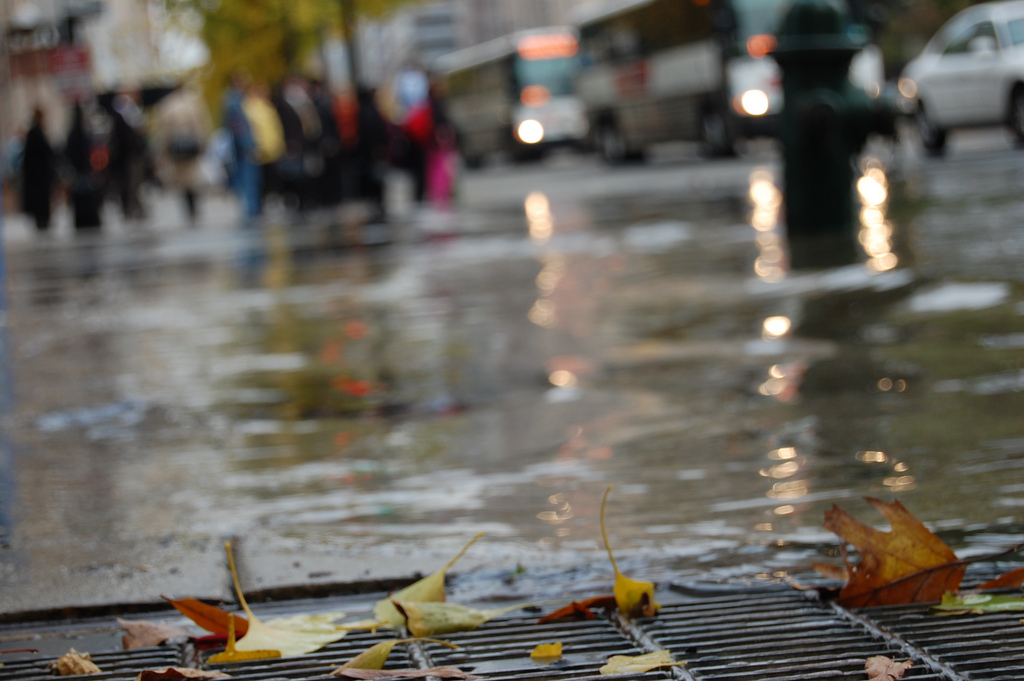
Austin needs to prepare itself for the twin threats of intense drought and periodic flooding that climate experts warn us will be the new normal in Central Texas. This means, among other things, enabling new developments and redevelopments to retain more stormwater onsite to mitigate flooding and to use some of this water to offset potable use in order to stretch supply. Rethinking how we design our city can provide additional sources of water and reduce polluted runoff.
The Austin City Council is expected to vote on a new Land Development Code (LDC)by the end of 2019, and city staff are now working up a draft for council consideration. Although most of code concerns zoning, it also addresses environmental protections at several points. We need to make sure that the new LDC preserves and improves Austin's environmental protections, and creates a more climate-resilient city.
Polluted runoff and flood mitigation are major areas of concern. In a natural setting, rainwater is slowly absorbed into the ground or taken up by plants so that it does not rush into waterways. In an urbanized setting, rain that strikes impervious cover (hard surfaces like buildings and parking lots) cannot infiltrate slowly into the soil as it would in a natural setting, and instead runs off into local waterways, speeding up the flow of water and contributing to flooding and erosion.
Stormwater runoff also carries pollution from parking lots into creeks. These challenges are becoming more significant as storms increase in severity due to climate change.
One way to address these risks is “green stormwater infrastructure” (GSI). This approach re-introduces natural elements into the built environment, like bioswales or raingardens, green roofs, and landscaped areas in parking lots. These methods detain water longer and also help filter it. Rainwater can be stored in large cisterns and released more gradually after the storm subsides; it can also be used to irrigate landscapes or taken inside the building to flush toilets, replacing potable water for these purposes.
Clean Water Action is pleased that the last year's draft of the new LDC (then called CodeNext) recommended incorporating GSI elements and:
- preserving protections for Austin's trees, particularly older 'heritage' trees;
- carring forward the voter-approved Save Our Springs initiative to protect the Barton Springs portion of the Edwards Aquifer;
- preserving the 2013 Watershed Protection Ordinance, which protects headwater streams in East Austin and pulls development further back from the center of creeks to reduce risk of flooding and erosion;
- closing the loophole that allows redevelopment to avoid installing stormwater controls if they do not increase impervious cover. This is a major improvement over current regulations;
- requiring new development and redevelopment with more than 45% impervious cover to retain peak stormwater onsite at the same level as an undeveloped, natural site would achieve. This is also a major improvement over existing regulations;
- requiring developers of sites of two to six units and 45% impervious surface or less to submit an engineer's letter certifying that the new construction will not increase stormwater runoff onto neighboring properties; and
- requiring new parking lots to include landscaped islands that help capture and filter stormwater runoff.
However, Clean Water Action believes that the LDC should be strengthened by:
- lowering the trigger mandating a new development or redevelopment install water quality controls from 8,000 to 5,000 square feet of impervious cover. 5,000 feet is what EPA recommends and what Austin’s own Watershed Protection Department recommended in 2013.;
- requiring that new developments use non-potable water to irrigate landscapes. This can include air conditioner condensate, stored rainwater, treated greywater and blackwater, as well as reclaimed water from the city;
- restoring the “beneficial reuse” components from earlier drafts of CodeNext. These would require that developments retain a greater amount of stormwater through GSI techniques and use it to irrigate landscapes or take it indoors to flush toilets or use in chilling towers.
Please send an email to the City Manager and to Austin Mayor Steve Adler and the city council asking them to include these protections to the new LDC!